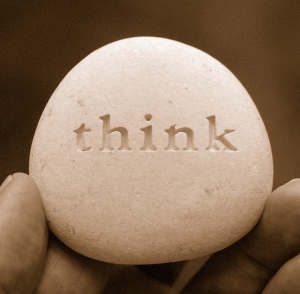Yes, I am going to start this post making you think about what happens when you do your taxes. Ok, maybe not a great way to start your day—sorry about that!
Stick with me on this. When you do your taxes, the act of just preparing the necessary information and filling out form after form causes you to think more deeply about your financial health than you had for the last few months—maybe than you had all year! The act of doing your taxes probably had you considering things you hadn’t thought about since the prior year: How much should I give to charity? Do I have the right mortgage? Should I re-think my investment strategy? Kind of a check-up for your pocket book.
If you are like me, you might actually consider changing your financial behavior after this annual act of torture. You might actually even start some healthy behaviors—at least for a month or two after this ordeal. You can bet that the IRS isn’t thinking about maximizing our behavior change—or making the most of this opportunity, but these behavioral effects happen anyway!
I would argue that simply filling out the HRA has a measurable impact on health behaviors—even if the HRA is poorly designed or executed. That said, there is so much you can do to maximize the impact of this natural check-up moment.
Here are some powerful ideas we recommend in the WellCert program to make the HRA process for each individual a more powerful behavioral change intervention.
Idea #1 – make the HRA an annual process with a strong reason for employees and their spouses to fill it out. If I could I would make completion of an annual HRA a requirement for every one that is covered by a health plan! You as a health care consumer get health plan coverage at a fraction of its real cost and your responsibility is to give us 15 minutes of your time each year to fill out your HRA. Make the HRA an annual process for everyone!
Idea #2 – provide historical comparisons from previous HRAs. Each person completing an HRA should see their summary data (like their Overall Wellness Scores) at least from the last three times they completed the HRA. Actually it would be even better if they saw their scores for the entire history of their completion of an HRA! Think about it like providing a “highlight reel” of the pattern of their past responses!
Idea #3 – provide a personal or online discussion or interpretation of what the HRA report is saying. We used to do group interpretation sessions where people could get their questions answered. These also would deal with helping the person develop a couple personal wellness goals or objectives. Using current technology we can now provide an online learning module that can help accomplish what we used to do in these group sessions. Offer an interpretation session that helps them identify 1 or 2 personalized next steps!
Idea #4 – make sure their personal health reports from the HRA provide fresh insights about their health. If each year’s report from the HRA is the same how can it provide much value to people? We need to put much more pressure on our HRA vendors to improve the utility of HRA reports. It’s not a technical limitation – it’s a design limitation! Assure that new and fresh insights come out of every HRA experience!
Idea #5 – require a face-to-face or telephonic discussion of each person’s HRA results with a certified wellness coach. Using a series of questions the coach can help the individual better understand the HRA results and can assist them with making small improvements in their health behavior. Discuss the report and mutually plan small improvements!
Idea #6 – provide a meaningful incentive reward for health and wellness improvements. Paying a $1,000 a year less for health plan coverage would be an example of a meaningful reward attached to several small changes or improvements in health behavior. Achievement, improvements or straight participation could all qualify. BTW: The employer doesn’t have to provide the $1,000 – it can be funded by restructuring the employee’s health plan premium contribution. Reward wellness behaviors and outcomes in a real way!
Next week we’ll look at how to boost completion rates.
Don’t forget, strategies for effective use of HRAs are one of the key skills we teach in our Level 1 WellCert worksite wellness certification program!

